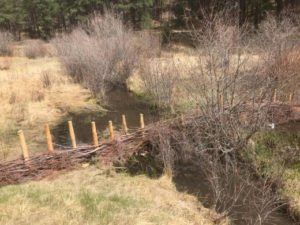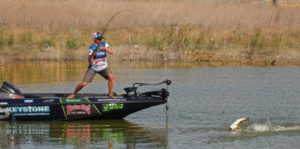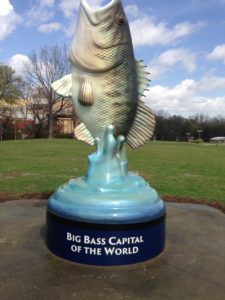Thank a Beaver for Your Trout Stream

Making trout habitat with fake beaver dams
Beaver dam analog: mimicking the real thing
by Toner Mitchell, Trout Unlimited
from
The Fishing Wire
I recently visited a tailwater stream known for its capacity to produce lots of brown trout, some of them quite large. The reservoir feeding this stream is operated exclusively for downstream agricultural users, the result of which is that the fishery is also renowned for its poor conditions in winter, when dam releases are curtailed and the stream becomes a thin vein of shallow puddles, trickles, and exposed spawning redds. Since this stream is in the coldest corner of New Mexico, anchor ice is common.
I was pleased to see the latest work of the beaver population, knowing that their ponds would provide winter refuge for fish. But I was there to see the leveling device (beaver deceiver) installed by the New Mexico Game and Fish department to mitigate the legitimate though misplaced concern of downstream irrigators, who felt that the beavers were holding back valuable water from ranches and farms. The deceiver was working as intended, sending water downstream while limiting the pond’s depth and expanse so as not to inundate an adjacent parking lot.
My next stop was a nearby fly shop. I proudly reported my observations to the proprietor, who proceeded to give me an earful. The stretch of stream occupied by the beavers had always been a money spot for his guides and their clients. Until, that is, the beavers took up residence. The pond had since become a bugless sucker hole devoid of trout, and though he acknowledged the positive impact of the beaver impoundment on riparian storage and late season flows, the shop owner judged the local beavers as a net detriment to the fishery. Beavers are either good or bad, he opined, never both.
The beaver is a keystone species, generally defined as an organism that exerts an outsized influence on the function and even formation of an ecosystem. Beaver dams capture peak flows, prolong spring runoff, while supporting and extending baseflows with water stored in riparian aquifers. Their deep ponds concentrate nutrients and macroinvertebrates; they provide shelter and security for trout, especially in winter.
Understandably, the perceived downside of beavers comes with the keystone package. Like wolves, another disproportionately influential animal, beavers disrupt on a landscape scale. They not only plug up streams, but ditches, culverts, and bridges. Their dams inundate yards, fields, and pastures used by livestock and campers. Beavers kill and eat prized trees. The disgruntled fly shop owner hypothesized that his favorite run-turned-hated-beaver-pond might have warmed too much to harbor the trout it once did and, along with possibly consuming too much oxygen, accumulated silt may have buried insect production.
For what little it’s worth, I’ve personally witnessed few instances where beavers have negatively impacted trout. I don’t doubt that it happens, certainly not in this case, but I think such stories should be viewed in the broader context of watershed health. Consider how many of our highest quality fisheries (and grazing pastures) were literally made by beavers. They cleared trees to build their dams, which filled with trapped sediment and forced channel migration across floodplains. Over time, floodplains expanded and thickened thanks to further beaver-induced sediment deposition. This long process created thick, spongy meadows, essentially grass-skinned reservoirs feeding streams with cooled groundwater.
In addition to logging, mining, grazing, floodplain development, and road building, our large scale beaver extirpation in the late 1800s contributed greatly to watershed degradation. Without beavers, natural and man-made “nick points” went unrepaired, leading to channel incision and headcutting. By armoring and straightening streams for flood control, we actually intensified flooding by concentrating flow and increasing its cutting force. As a result, our beaver-created meadow reservoirs have been drying from within for many decades.
As climate change tightens its unpredictable yet certain grip on our landscapes, it falls on us, the ultimate keystone species, to restore the land’s capacity to absorb disturbance while maintaining function. To hedge against drought, we must lift and spread water tables and reconnect streams with their floodplains, especially in headwater regions. Reconnected floodplains will also enable our streams to de-energize high intensity precipitation events, particularly important in this era of common wildfire.
Where beavers live, we must make them welcome, as they are the cheapest and most efficient means of restoring the greatest acreage of watershed in the shortest timeframe. They work around the clock and accept food as payment; no matter how hard we try, we will never find a better deal than that.
And where they don’t live, we must imitate them; thanks to conservation groups in New Mexico, including the Truchas Chapter of TU, imitating beavers may soon become the hottest trend in stream restoration. Volunteer-made beaver dam analogs (BDAs) employ natural materials and are designed to pass water, trap sediment, and raise riparian water tables. Combined with willow and cottonwood plantings, which provide stream shading and future beaver food, BDAs create true beaver habitat and often attract the real animals to continue this important work.
As a wise man I know once said, “In times of flood, prepare for drought. In drought, prepare for flood.” I’m not sure, but I think this guy may have been a beaver in a previous life.
Toner Mitchell is TU’s New Mexico Water and Habitat Program coordinator for New Mexico.
Read more from T.U. at www.tu.org.



 Bass Statue in Eufaula[/caption]
Bass Statue in Eufaula[/caption]